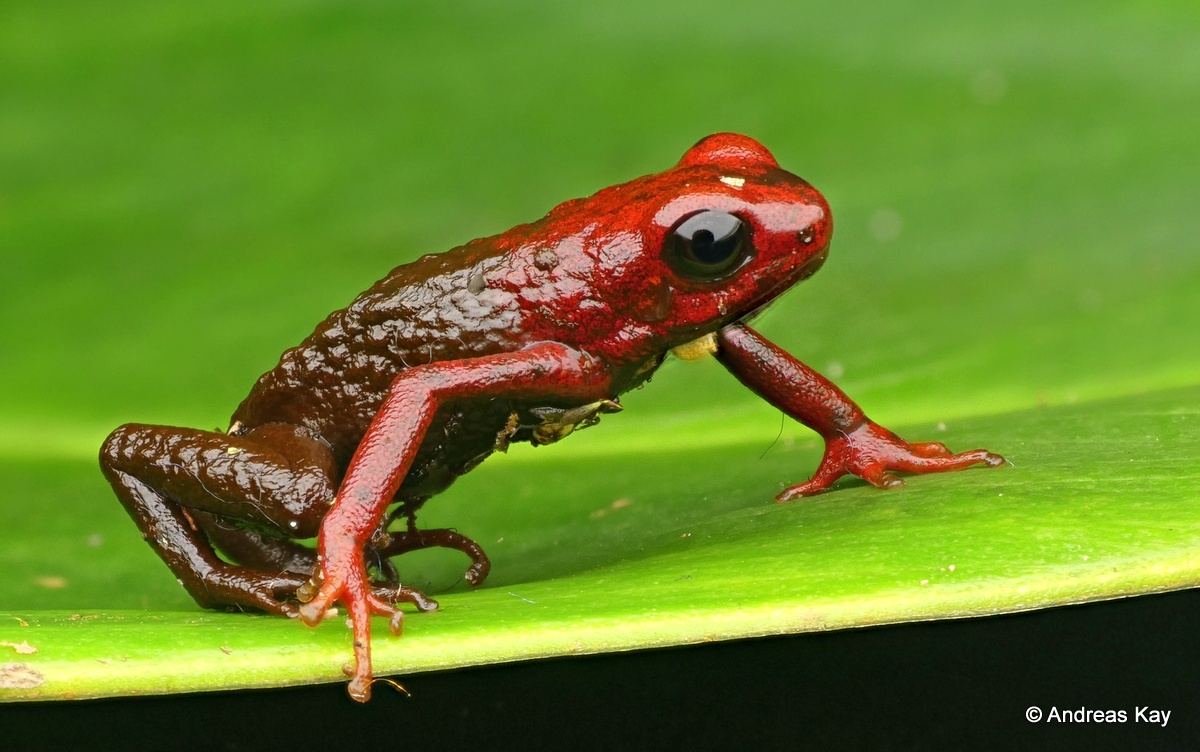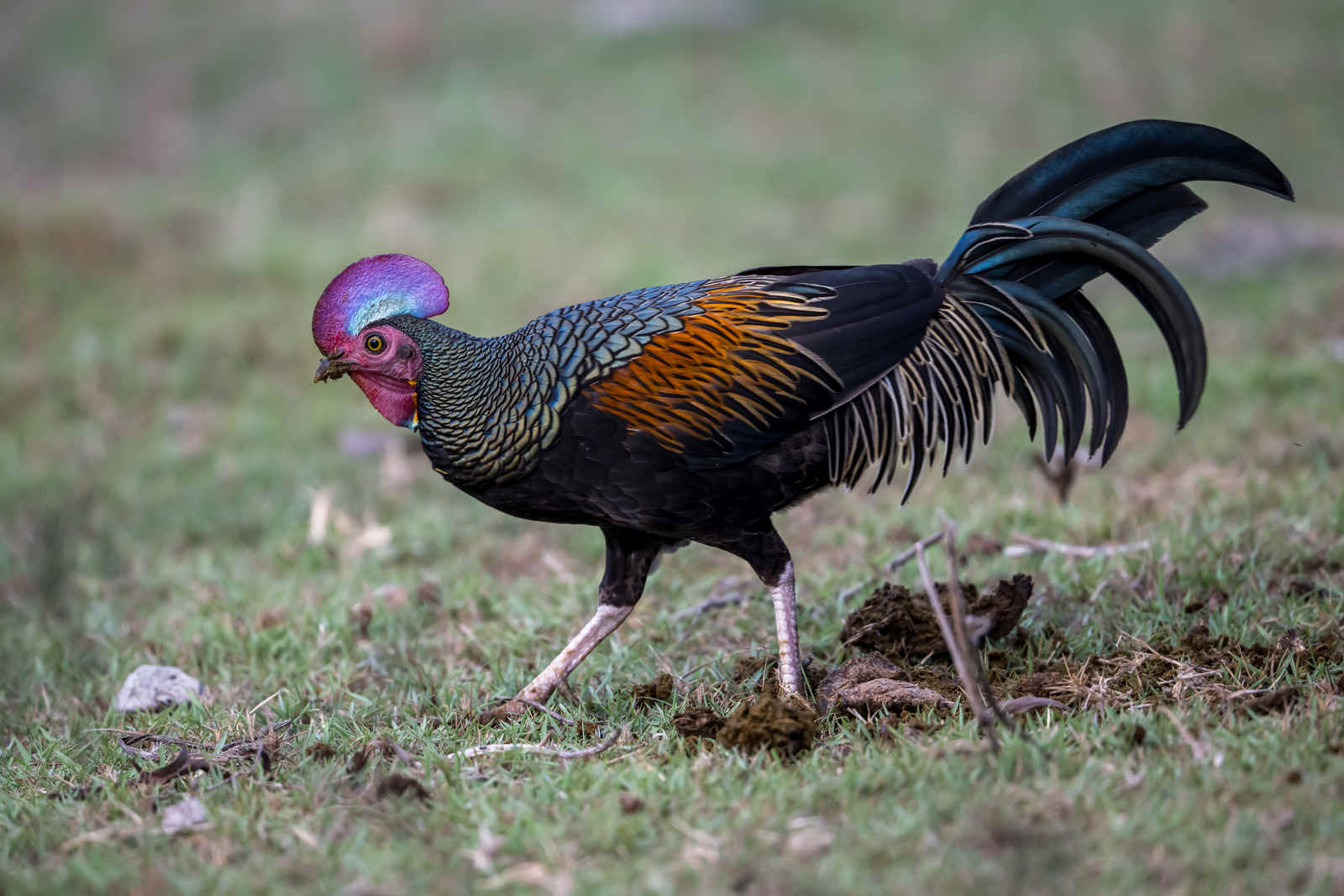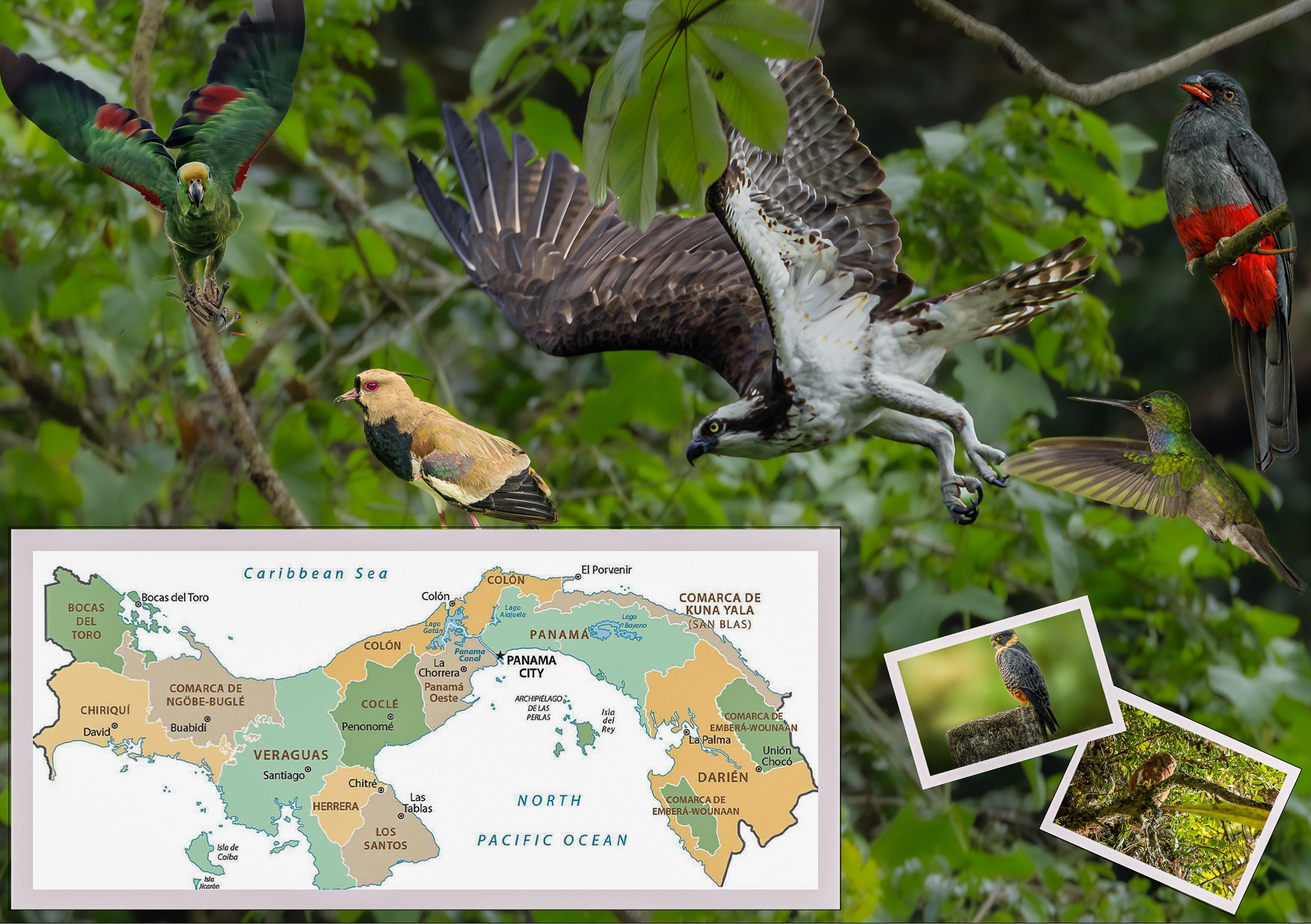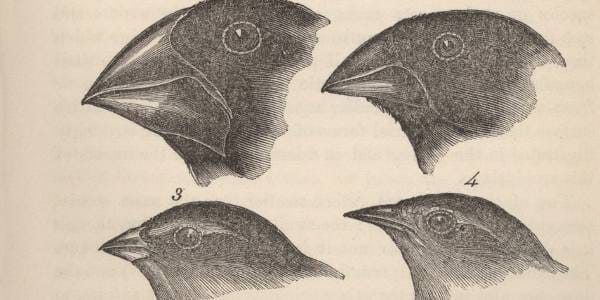10,000 Birds Birds, Birding and Blogging
- Birds of the Mornington Peninsulaby Sanjana Raj on December 28, 2025 at 12:00 pm
November is a very happy month in my household, as we have several birthdays before the official silly season. It is also a hopeful time of year in Melbourne. The wetness of spring begins to ease, and summer starts peeking through the corner (supposedly – it is beyond the scope of human ability to predict Melbourne weather). This November we went away to the Mornington Peninsula for a long weekend. It was a birthday trip, but I tried my very hardest to maximise the birdwatching opportunities. Mornington Peninsula is a very popular holiday destination and is technically part of the larger Melbourne area. It is, however, over an hour’s drive from Melbourne CBD. We stayed in a small beach town called Rye. The beach and immediate surrounds were completely smothered by Silver Gulls (pictured at the top of this post) and a lesser number of Pacific Gulls, but there were additionally much welcome flocks of Welcome Swallows who stayed still just long enough for me to make eye contact with them. We also got to see a stingray and a pufferfish in the water, so it was all very exciting stuff. FaceTime with a Welcome Swallow At home, I’m surrounded by Noisy Miners, Rainbow Lorikeets, and Sulphur-crested Cockatoos, but in Rye, the most numerous birds on the streets away from the water were Red Wattlebirds and Little Wattlebirds. Our accommodation was visited daily by vibrant Crimson Rosellas, Eastern Rosellas, and Eastern Spinebills. To me, Eastern Spinebills are the most beautiful of all the Honeyeaters in Victoria, and I am always thrilled to see them. One of the unexpected bird havens on this trip was the Mornington Peninsula Hot Springs. Instead of enjoying a restorative bath as the more sane visitors were doing, I was crouching near bushes in an oversized bathrobe. The highlights were the Spiny-cheeked Honeyeater, the Brown Thornbill, the White-browed Scrubwren, the Willie Wagtail, and a Little Pied Cormorant taking a snooze in full view. The Little Pied Cormorant just before he took a nap. Day two was spent at Point Nepean National Park, where I saw my first Silvereye, Yellow-faced Honeyeater, and an Eastern Yellow Robin. We also spotted a pair of Australasian Gannets and an Echidna, which is not a bird but does lay eggs and, moreover, is really, really cute, so I will keep this picture here. We drove to Sorrento for lunch (another gorgeous beach town). As I enjoyed a delectable chicken and leek pie, we sighted a Crested Tern. Other terns were seen on this trip, but this was the only one I could identify with confidence. On the final morning, we went to the lookout over London Bridge, which is also part of the Point Nepean National Park. We watched a fight break out between a pair of Silver Gulls and a Pacific Gull, all the more tense as they were buffeted by the blustery wind. Amidst that drama, we spotted a Sooty Oystercatcher (another lifer for me) down below on the beach. With that burst of dopamine, we got in the car to return home. As our toddler needed a nap (and because he is the king of the world, as all toddlers are), we hadn’t gone down to the actual beach. Dear reader, you can imagine my heartbreak when another in our group, after descending to the beach, later sent me pictures of the Hooded Plovers they had seen just metres away from them. I have since come to terms with the fact that this is all part of the character-building that is birding around a toddler’s very demanding lifestyle. Feast your eyes on the Hooded Plovers I missed. So, all in all, I highly recommend exploring this part of Victoria that’s bursting with birdlife. If that’s not enough of a draw (it should be if you’re on this site), there is always the beach.
- The Chemistry of Birds (26): Chemical Defense in Avian Preyby Kai Pflug on December 28, 2025 at 12:00 pm
In “The Restaurant at the End of the Universe” (Douglas Adams), a cow introduces itself to the diners with the words “I am the main Dish of the Day. May I interest you in parts of my body?” Unfortunately for birds all over the world, most animals suitable as avian prey are far less accommodating. They even resort to chemical warfare just to avoid being eaten. Some birds think this is grossly unfair and point out the prohibitions of the Geneva Convention, but without much effect. So, let us ignore the morals of this defense and look at the chemicals used by different groups of animals. Insects Milkweed butterflies ingest cardenolides (a type of steroid) contained in the milkweeds that they mostly feed on. This cardenolide deters most predators, except a few that have evolved to become cardenolide-tolerant, such as the black-backed orioles. Other birds, such as starlings, learn to avoid these butterflies after eating them once and experiencing vomiting and distress. Cardenolides are toxic to animals through inhibition of the enzyme Na+/K+-ATPase, which is responsible for maintaining the sodium and potassium ion gradients across the cell membranes (source). A cardenolide. Cardenolides are C(23)-steroids with methyl groups at C-10 and C-13 and a five-membered lactone at C-17 Ladybird beetles (these are the cute red ones with the black dots) secrete an alkaloid-rich venom from their leg joints. Chemically, it consists of coccinellines – alkaloids composed of three fused piperidine rings that share a common nitrogen atom (source). These taste bitter and are toxic to many birds. Precoccinelline, an alkaloid produced by the seven-spot ladybird Burnet moths contain cyanogenic glycosides that release cyanide when crushed, which has been shown to lead to rejection by chickens (source). Interestingly, the moths can both deal with cyanogenic glycosides produced by plants (i.e., they are not poisoned by them) and have also developed their own internal way of synthesizing them as a chemical defense (source). Amygladin, a cyanogenic glycoside. Note the -CN group that can be released as cyanide. Amphibians Poison dart frogs contain poisons such as batrachotoxins, which are highly toxic to birds. And yes, the name comes from some Amazonian hunters using the frogs’ secretions to poison the tips of blowgun darts. The frogs get the toxin from batrachotoxin-containing insects that they eat, and then secrete it through the skin. Interestingly, there are even a few birds (pitohui) that are toxic based on the same process and toxin. Batrachotoxin, a cardiotoxic and neurotoxic steroidal alkaloid. It opens the sodium channels of nerve cells and prevents them from closing, resulting in paralysis and death (source). Many tropical birds, including motmots and jacamars, therefore avoid brightly colored frogs (which even leads to some non-toxic frogs adopting similar warning colors). The rough-skinned newt produces tetrodotoxin, which can kill birds if they swallow a whole newt. The working mechanism is similar to that of batrachotoxin. Tetrodotoxin Reptiles Some snakes, such as gartersnakes, eat toxic newts and, rather than being poisoned, sequester the tetrodotoxin and become toxic themselves. Marine Animals Both pufferfish and blue-ringed octopus are also toxic due to tetrodotoxin, most likely via ingestion of tetrodotoxin and/or tetrodotoxin-producing bacteria (source). One paper describes a Great Egret catching and immediately releasing a toxic pufferfish “with bill washing and discomfort movements afterwards”. There are many other examples in the different categories, whether caterpillars, bombardier beetles, and bees for insects, fire salamanders for amphibians, or the thiols used by skunks to deter raptors. Birds generally quickly learn to avoid toxic prey, with their learned prey aversion often lasting lifelong. Poisonous species also often advertise their toxicity using bright colors. Photo: “Poison dart frog, Excidobates condor, Dendrobatidae” by In Memoriam: Ecuador Megadiverso is licensed under CC BY-NC-SA 2.0.
- Three Photos: Chickens of the Jungleby Kai Pflug on December 28, 2025 at 12:00 pm
Green Junglefowl, Barat NP, Bali, November 03, 2024 Red Junglefowl, Kaeng Krachan, Thailand, July 12, 2025 Sri Lanka Junglefowl, Horton Plains, Sri Lanka, March 19, 2025 Photos by Kai Pflug
- Panamá – Profile for Birdersby Fitzroy Rampersad on December 27, 2025 at 12:30 pm
Panama is small. Blink-and-you-miss-it small.And yet, somehow, it manages to punch far above its weight in birds. I’ve often joked that Panama feels like a place where continents, oceans, and bird families all decided to meet for coffee and never quite left. North meets South, Pacific meets Caribbean, skyscrapers meet rainforest, and, crucially for us birders, over 1,000 bird species meet within a country you can cross in a few hours by car (traffic and coffee /pit stops permitting). If you’ve ever wondered how one country can offer city parks with Trogons, foothills with Hummingbirds, islands with endemics, and migration spectacles within a single morning… You are not alone! Highlights Over 1,000 recorded bird species Exceptional mix of North and South American lineages World-class birding within Panama City itself Easy access to rainforest, cloud forest, wetlands, and islands One of the best countries anywhere for urban birding Panama is the rare place where its possible to photograph a motmot before breakfast, a raptor migration by lunch, and shorebirds at sunset, sometimes without ever leaving the city. Key Bird Species and Families Panama’s magic lies in its overlap. This is where bird families from two continents collide politely and decide to coexist. Trogons and Quetzals – Forest Royalty Family: Trogonidae Few birds stop birders in their tracks quite like a Trogon. Often motionless, perched quietly in the forest, they feel almost unreal when you finally spot them. Salty-tailed Trogon In Panamá, the Slaty-tailed Trogon is a rainforest favorite, especially in lowland forests. The cooler highlands, places like Boquete and Cerro Punta offer chances to see the legendary Resplendent Quetzal, a member of the trogon family and a bird that feels as much myth as reality. Trogons are closely tied to fruiting trees and healthy forests, making them excellent indicators of intact habitat, and a reward for patience. Resplendent Quetzal Parrots and Macaws – The Voice of the Canopy Family: Psittacidae If you hear loud, excited calls overhead, chances are parrots are nearby. Panamá’s forests and open areas are alive with these intelligent, social birds. Red-lore Parrot Species such as the Red-lore Parrot, Mealy Amazon, and Yellow-crowned Amazon are regularly seen and heard. In eastern Panamá and select reintroduction areas, the Scarlet Macaw adds flashes of red, yellow, and blue to the sky. Beyond their beauty, parrots play a vital role as seed dispersers, and their presence often defines the atmosphere of a place long before you see them. Yellow-crowned Amazon Hummingbirds – Small Birds, Big Energy Family: Trochilidae With more than 60 species recorded, hummingbirds are one of Panamá’s most exciting bird families. They occur everywhere, from sea level gardens to cloud forests. Scintillant Hummingbird The Rufous-tailed Hummingbird is the undisputed champion of adaptability, found in cities, gardens, and forest edges. Other favorites include the White-necked Jacobin, Violet-crowned Woodnymph, and the striking Snowy-bellied Hummingbird. Purple-crowned Fairy They are essential pollinators, endlessly entertaining to watch, and a constant challenge for photographers. Tanagers, Euphonias, and Honeycreepers – Color Everywhere Family: Thraupidae If Panamá had a “signature” bird family, this might be it. Tanagers bring color to every habitat imaginable. There are around 26 species of Tanagers and closely related Thraupidae members recorded in Panama. Blue-grey Tanager The Blue-gray Tanager is one of the most common birds in the country, while species like the Bay-headed Tanager, Summer Tanager (in the highlands), and Honeycreepers add bursts of brilliance to forest edges and gardens. Hepatic Tanager Summer Tanager Red-legged Honeycreeper They’re often the birds that convince people to pick up binoculars for the first time. Bay-headed Tanager Thick-billed Euphonia Wrens – The Soundtrack of the Tropics Family: Troglodytidae You may not always see wrens, but you will almost certainly hear them. These small birds deliver some of the loudest and most complex songs in the forest. Wrens are one of my favourite, you can read more on what I have to say about that here. Bay Wren The House Wren thrives in urban areas, while the Bay Wren, Song Wren, and White-breasted Wren dominate different habitats across the country. From dawn to dusk, wrens provide a constant reminder that Panamá’s forests are very much alive. White-breasted Wren Raptors – Power and Precision Families: Accipitridae & Falconidae Panamá is both a migration corridor and a stronghold for resident raptors. Snail Kite The Harpy Eagle, Panamá’s national bird, represents the ultimate rainforest predator. More commonly seen species include the Roadside Hawk, Bat Falcon, and Laughing Falcon. Laughing Falcon (female) Raptors sit at the top of the food chain, and seeing them regularly is a sign of a healthy ecosystem. Road-side Hawk Wading Birds and Shorebirds – Life Along the Water Families: Ardeidae, Scolopacidae, Charadriidae Coasts, mangroves, wetlands, and even urban shorelines are home to an impressive variety of waterbirds. Species like the Great Egret, Little Blue Heron, and Black-crowned Night Heron are year-round residents, while migrants such as Willets ,Sandpipers and Plovers connect Panamá to breeding grounds thousands of kilometers away. Panama City has a healthy population of Brown Pelicans and Cormorants. Little-blue Heron Ruddy Turnstone Willet Sandpipers Black-crowned Night Heron These birds are especially visible in places where land meets water, and often surprisingly close to city life. Flycatchers – Masters of the Perch Family: Tyrannidae Flycatchers are everywhere in Panamá and are among the easiest birds to observe once you learn their habits. Streaked Flycatcher Tufted Flycatcher The bold Great Kiskadee, elegant Tropical Kingbird, and social Social Flycatcher dominate open areas, while species like the Yellowish Flycatcher are more at home in cooler highland forests. Grey-capped Flycatcher Their sit-and-wait hunting style makes them perfect subjects for learning bird behaviour. Best Regions for Birding The joy here is not choosing where to bird, it’s choosing which incredible option today. A quick tour, birding-style: Panamá Province – Urban birding royalty: Metropolitan Natural Park, Parque Omar, Panama Bay, Cerro Ancón, plus foothill birding at Cerro Azul Canal Zone (Panamá & Colón) – Soberanía National Park, Pipeline Road, Summit, Gamboa — legendary for good reason Coclé – El Valle de Antón brings hummingbirds and mixed flocks with mountain breezes Veraguas – Mainland forest birding and the jewel: Coiba Island National Park Chiriquí – Highlands, cloud forest, and coffee-with-quetzals territory Bocas del Toro – Islands, mangroves, and Caribbean specialties Azuero Peninsula (Herrera & Los Santos) – Dry forest remnants and coastal migration Darién – Remote, rich, and unforgettable for those who venture there Guna Yala & Comarcas – Coastal,…
- Why Birders Dig Darwinby Mike on December 27, 2025 at 12:00 pm
This post is republished in our “From the Archives” series, featuring highlights of our vast back catalogue of more than 10,000 birding-related posts published over the last 15 years or so. February 12 is Darwin Day, the birthday of the brilliant author of On The Origin of Species. This year marks the 200th anniversary of Charles Darwin’s birth, which nature lovers everywhere should celebrate joyously. We find reasons to praise Darwin on this blog all the time and explain why in this post, first published in 2009. The name of this humble website is based on a round number, a very round one indeed considering the shape of all those zeroes. 10,000 is the approximate number of bird species in the world but certainly not the actual number. If I understand correctly, the known number of avian species lies somewhere south of 10,000, yet scientists believe that when all is said and done, once the lumping, splitting, and searching is complete, we may have named 12,000, 13,000, or even more. Of course this calculus does not consider how many species are teetering on the brink of extinction or how global warming promises to make survival difficult for ecological specialists of any and every stripe. 10,000 is ultimately a useful estimate that ignores the ebb and flow of conditions on the ground. The truth is that, as far as the actual number of bird species living in our wide world right now, sometimes we have bad days when we lose a bird forever. Sometimes we have good days where we discover a long-lost friend or a brand-new one. The delight we all share in the discovery of new species highlights the hidden connection between birding and evolutionary theory. Birders are consumers of the fruits of evolution, celebrants of the processes of natural selection and genetic drift. It may be fair to say that birding has deeper ties to evolutionary theory than any other recreational activity in the world. Whether we realize it or not, those of us who track changes in avian taxonomy for year to year, who care about splits in scrub-jays or Empidonax flycatchers, are end-users of the very biological processes that inspire so much controversy and confusion. On SpeciationSpeciation is an evolutionary process. The biologist David Haig explains, “Speciation comes about when there is recombination and isolation between different groups of genes, so that no longer can genes in one group be recombined with genes in another group.” What this means is that one species, for example a Stripe-headed Tanager, exists at a point in time as a distinct set of interbreeding organisms. Every member of this gene pool is recognized as a stripe-headed tanager. These tanagers breed only with each other, eschewing the company of parrots, warblers, and even other groups of tanagers, some of which are really, really beautiful. (Let’s not get into hybridization, which only complicates the point!) Now, imagine that some genetic variant, say a longer beak, spreads through part of the pool as a result of factors like natural selection and that birds possessing this variant mate only with other birds with the variant. This can happen for a number of reasons. In the case of our tanager, groups of birds found themselves separated over time on different Caribbean islands. Distinct species evolved out of these geographically isolated populations. Through the process of allopatric speciation, one stripe-headed tanager became four different species: Western Spindalis, Puerto Rican Spindalis, Jamaican Spindalis, and Hispaniolan Spindalis. Now that they’re different species, it is assumed that, even if, say, the Puerto-rican and Jamiacan Spindalis came together, they wouldn’t interbreed. (If the likelihood was that if these distinct populations ever occupied the same territory again and would interbreed, resulting down the road in a single homogeneous population, they would only be considered subspecies, not species.) New species may also develop in the same geographic area at points where ecosystems diverge or possibly even in the same ecosystems. Distinct gene pools form and one species becomes two, three, or many, many more. Where once we recognized the Solitary Vireo, we now acknowledge Blue-headed, Plumbeous, and Cassin’s Vireos. Good news for champions of biodiversity as well as those of us eager to inflate our life lists. Birding and BiodiversityThere is much more to the story of speciation, though even the brief overview above might be more scientific than many nature lovers would like. Why speciation is controversial is beyond me, but how it can serve as the foundation of an endlessly fascinating preoccupation with different lifeforms has become much more understandable as my experience in watching birds, insects, and a wider and wider range of lifeforms increases. Let others explain why Lesser and Greater Scaup look so similar or how the Mallard’s dominant genes threaten the integrity of related duck species. I’m just amazed every time I successfully distinguish between Anas platyrhynchos and A. rubripes or observe how the relationship between species and ecosystem is far more reciprocal than it might seem on the surface. Charles Darwin was an earnest, passionate naturalist and scientist. He was also, in a manner of speaking, the original nature blogger. A fitting way for anyone to celebrate Darwin Day would be to go out and count a bunch of bird ( or tree, fish, etc.) species. Judgments of fitness are not necessary! (You might also want to check out the Blog for Darwin between Feb. 12-15 for links to exceptional Darwin-related content.)
BirdWatching Your source for becoming a better birder
- 12 Winter Moments Every Birdwatcher Should Look Forby Paul Costello on December 17, 2025 at 8:48 am
The countryside feels hushed, colors soften, and days are short, but winter strips nature back to its essentials. Leaves fall, cover thins, and suddenly birds … Read More “12 Winter Moments Every Birdwatcher Should Look For”
- Why Some Birds Choose to Stay North in Winterby Paul Costello on December 10, 2025 at 8:22 am
Migration is often portrayed as the heroic default, a grand seasonal pilgrimage that sweeps birds thousands of miles south to warmth and abundance. But for … Read More “Why Some Birds Choose to Stay North in Winter”
- How Birds Keep Their Feet From Freezingby Paul Costello on December 9, 2025 at 10:58 am
Watching a gull stand calmly on ice or a duck paddle through water that would numb a human in minutes is one of winter’s most … Read More “How Birds Keep Their Feet From Freezing”
- Winter Roosting Tactics You Never See: Cavity Stacking, Snow Tunnels, & Communal Heat Sharingby Paul Costello on December 9, 2025 at 10:43 am
Winter reshapes nearly every instinct a bird has. Food becomes scarce, nights grow dangerously long, and temperatures fall to levels that can kill a small … Read More “Winter Roosting Tactics You Never See: Cavity Stacking, Snow Tunnels, & Communal Heat Sharing”
- Why Birds Fluff Up Their Feathers in Winter – The Secret Behind the Puffby Madavor Media on December 2, 2025 at 4:21 pm
When temperatures drop and snow begins to fall, birds suddenly look rounder, fluffier, and almost cartoon-like. Chickadees transform into little spheres, sparrows double in size, … Read More “Why Birds Fluff Up Their Feathers in Winter – The Secret Behind the Puff”










